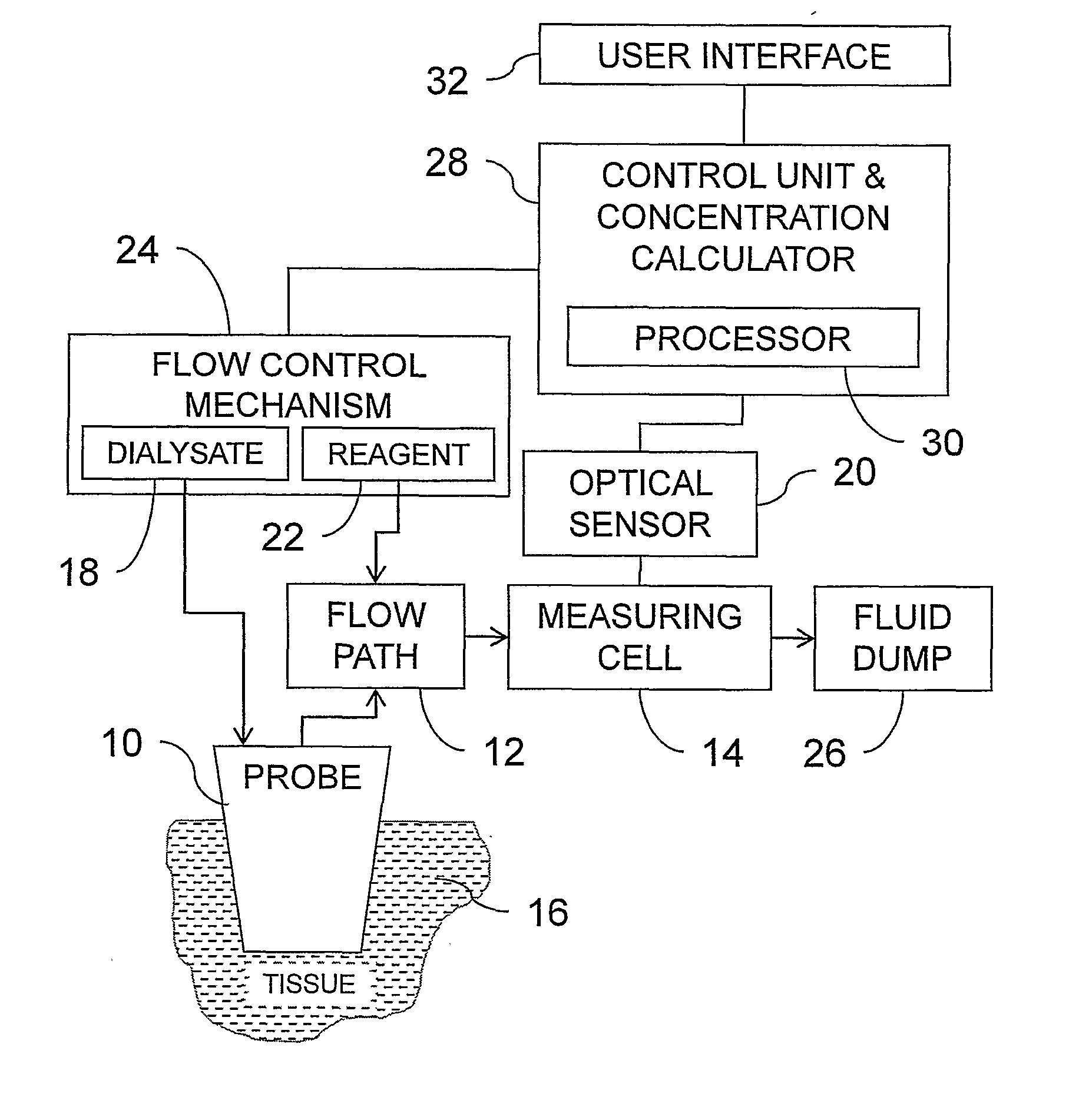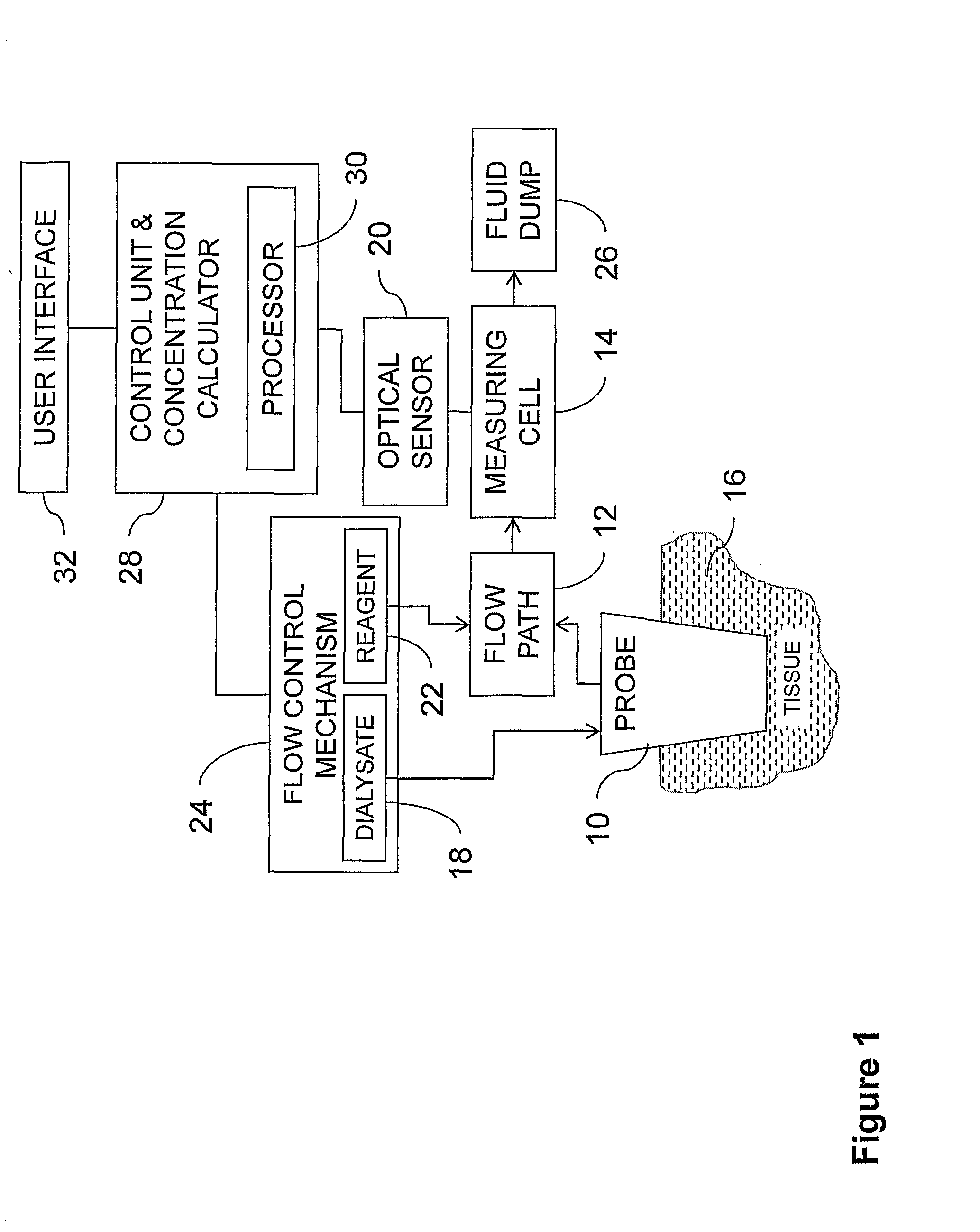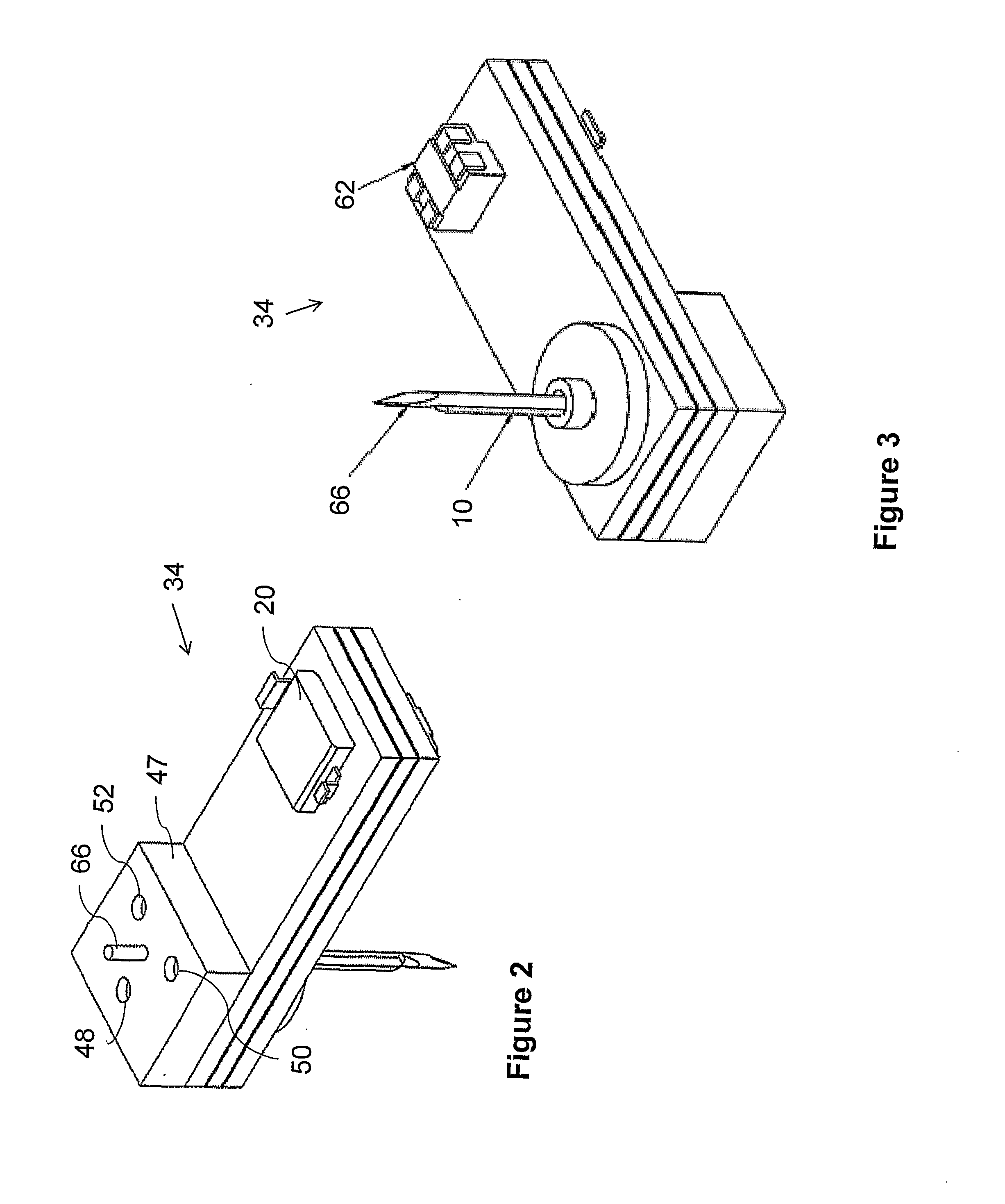Systems and methods for implementing rapid response monitoring of blood concentration of a metabolite
a technology of metabolite and rapid response, applied in the field of system employing a microdialysis probe, can solve the problems of excessive transport time, considerable time lag in measurement, and time lag between the actual blood glucose level change and the sensing of the change valu
- Summary
- Abstract
- Description
- Claims
- Application Information
AI Technical Summary
Benefits of technology
Problems solved by technology
Method used
Image
Examples
Embodiment Construction
[0057]The present invention is a system and method based on a microdialysis probe for monitoring the concentration of glucose or other metabolites in the blood.
[0058]The principles and operation of systems and methods according to the present invention may be better understood with reference to the drawings and the accompanying description.
[0059]The present invention includes a number of primary aspects, each of which is believed to be of patentable significance in its own right, and which are most preferably used in synergy to provide a particularly advantageous combination, as will become clear. A first aspect of the invention relates to a particular mode of pulsed flow operation which is effective to greatly reduce the time lag in metabolite concentration measurement. A second aspect relates to a structure of the device which provides very low-volume flow paths from the probe to the measurement volume. A third aspect of the invention relates to a particularly preferred low-volume...
PUM
 Login to View More
Login to View More Abstract
Description
Claims
Application Information
 Login to View More
Login to View More - R&D
- Intellectual Property
- Life Sciences
- Materials
- Tech Scout
- Unparalleled Data Quality
- Higher Quality Content
- 60% Fewer Hallucinations
Browse by: Latest US Patents, China's latest patents, Technical Efficacy Thesaurus, Application Domain, Technology Topic, Popular Technical Reports.
© 2025 PatSnap. All rights reserved.Legal|Privacy policy|Modern Slavery Act Transparency Statement|Sitemap|About US| Contact US: help@patsnap.com



